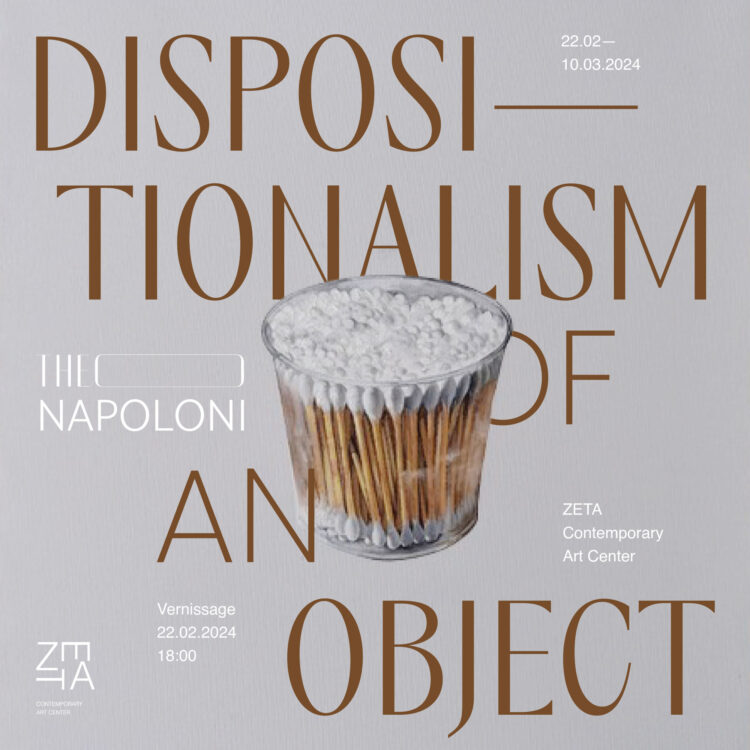Dispositionalism Of An Objectby
Theo Napoloni
22.02 — 10.03.2024
Vernissage
22.02.2024, 18:00
Text by: ALKETA KURRIZO
The subjects of Napoleoni’s paintings more than answers, are questions. Starting from “the definition” chosen by the author as title for the exhibition, we must first deal with their metaphysics, and then after navigate through; the process of selection, reproduction and the pictorial technique. In contemporary metaphysics, a surging number of philosophers express their allegiance to dispositional essentialism, the position that at least some properties have dispositional essences.
Some of them go beyond this to take a stronger position, that all suitably qualified properties are essentially dispositional. This position is known as dispositional monism or causal theory of properties. Alternatively, it is simply named ‘dispositionalism’.
1 Monism, in metaphysics, is the doctrine where the reality consists of a single unifying substance, or that the mental and physical are indivisible.
2 Is this the premise leading the author to paint these subjects in a hyper realistic style? Realized between the years 2016-2023 these paintings consider subjects that has caught the authors attention due to their ambiguity and absurd aesthetics. Seen with the outsider’s eye, they have indeed lost their dimensions, narrative and functionality.
The details reproduced in meticulous way, portend the artist’s reflection on the content as well as the didactic of his painting.
The neutral backgrounds are in function of the selected subject, serving as worthy carriers of “the untitled content” that the artist propose to the public in these 11 paintings. He created this “iconography” as a medium to show how objects can talk about themselves beyond the canons of language and image.
A reference from the History of Art might help to navigate through to the meaning of this objects, the famous Magritte’s Ceci n’est pas une pipe 3. Just like many other works of his, it does not beg viewers to ask the question “What is it?” but rather, they find themselves asking.
As Michel Foucault states on Magritte’s famous painting
“To understand Ceci n’est pas une pipe, people need to understand themselves first. They need to understand that language and reality do not share any organic relationship and that the names of objects don’t come about when you view them”
Are the subjects in the painting’s 11/9/3 detergents and personal hygiene objects? I this money counting machine (7), or (8) a rope?
Are these concrete making vehicles (5) like the ones that rumble every day in the streets of Tirana? Is that (4) the national television motion direction truck or a toy car to be collected?
(1) Handcart or pastel color cover? (6) Motorcycle or colorful clothes?
(10) Is this an old photo or a trowel? Probably, none of them.
Theo Napoloni’s exhibition “The Dispensationalism of an object “is A PERFECT SETTING TO RAISIE QUESTIONS.
